In recent years, a new technology has taken the world of running shoes by storm: carbon plate running shoes. These pricey and often highly acclaimed shoes shoes have garnered immense attention and sparked heated debates among athletes, coaches, and enthusiasts alike. I’ve done the testing to help you understand how different brands feel.
But what exactly are carbon plated running shoes, and what makes them so special?
Traditionally, running shoe technology focused on providing cushioning, stability, and support to enhance comfort and prevent injuries.
However, carbon plate running shoes have redefined the game by introducing a revolutionary element: a thin layer of carbon fiber embedded within the midsole. This seemingly small addition has created a shift in the running world, as athletes have experienced unprecedented benefits and performance improvements.
In talking with a number of professional runners this year, many have said “you can’t expect to win without them.” This was part of a larger discussion about potential injuries from carbon fiber shoes simply being worth the risk.
As we delve deeper into the world of carbon plate running shoes, we’ll explore their composition, unravel the science behind their performance-enhancing capabilities, and discuss the ongoing debates and considerations surrounding them.
Plus, I’ve spent the last couple years trying to test as many new models as possible with a variety of speed workouts so I can tell you exactly how they stack up! You can skip over some of the tech talk if you just want to see the recommended shoes.
10 Best Carbon Plate Running Shoes
Obviously I have not tested every single shoe on the market, which means I might have to update this article at some point. But right now, I’ve spent time running in some of the models we are hearing a lot about and it’s made it very easy to compare and contrast each of them.
This list has changed quickly in 2025 with new shoes coming out!!!
I like giving you something from varied brands because often you know one fits you better.
As the demand for carbon plate running shoes continues to surge, a wide array of models from various brands have emerged, each promising to deliver unparalleled performance.
By scrutinizing their unique features, performance attributes, and user feedback, we aim to provide a comprehensive analysis that will assist runners in making an informed decision when choosing their next pair of carbon plate shoes.

Comparison of Carbon Plate Shoes
Below I’m going to give a deeper dive in to each shoe, but for a quick comparison this should be useful.
- Nike Vaporfly 4 – Bounciest of them all and a very narrow fit, can feel like running on a rail
- Nike AlphaFly 3 – Second bounciest, still a narrow fit, but much more stable
- On Cloudstrike – Most like running in your traditional running shoe, which can mean it’s more comfortable and lower injury risk
- Adidas Adizero Adios Pro EVO 2– Wider fit than Nike, more stable and lots of bounce bounce. Good for forefoot strikers
- New Balance FuelCell Super Comp Elite v5 – Increase in height without compromising weight, cushion or snappiness
- Saucony Endorphin Elite 2 – Great cushion and similar to Adizero and Alphafly, definitely distance shoe
- Saucony Endorphin Pro 4 –The everyday runners carbon plate shoe
- Asics Metaspeed Sky– Max cushion with a lot of pop which isn’t a combo you often see
- HOKA CieloX1 2.0 – Probably widest option, similar cushion to Nike, SO MUCH better than the Rocket
- Puma Nitro Elite 2– What the Olympic marathon trials winner was wearing
- Nike Zoomfly 6 – BONUS shoe for middle of the pack
Running Coach note that I must make…while these shoes can help you run faster and that is SO FUN, remember they are not shoes to wear for every single run. You should save these for intervals, tempo and race day. You need to spend time in your other shoes and avoid potential injury.
👉Nike Vaporfly 4
I’m starting here because it’s the shoe you see most often on the feet of elite runners. And one that feels quite different from most of the other shoes. For me it was an instant recognition that my running felt different in this shoe.
The Nike Vaporfly was first introduced in 2017 and immediately caused a sensation in the running community.
V4 is great for runners chasing PRs, those who are looking for an extra pop on race day, and anyone who loved the Vaporfly 3 but wanted something even lighter and more aggressive.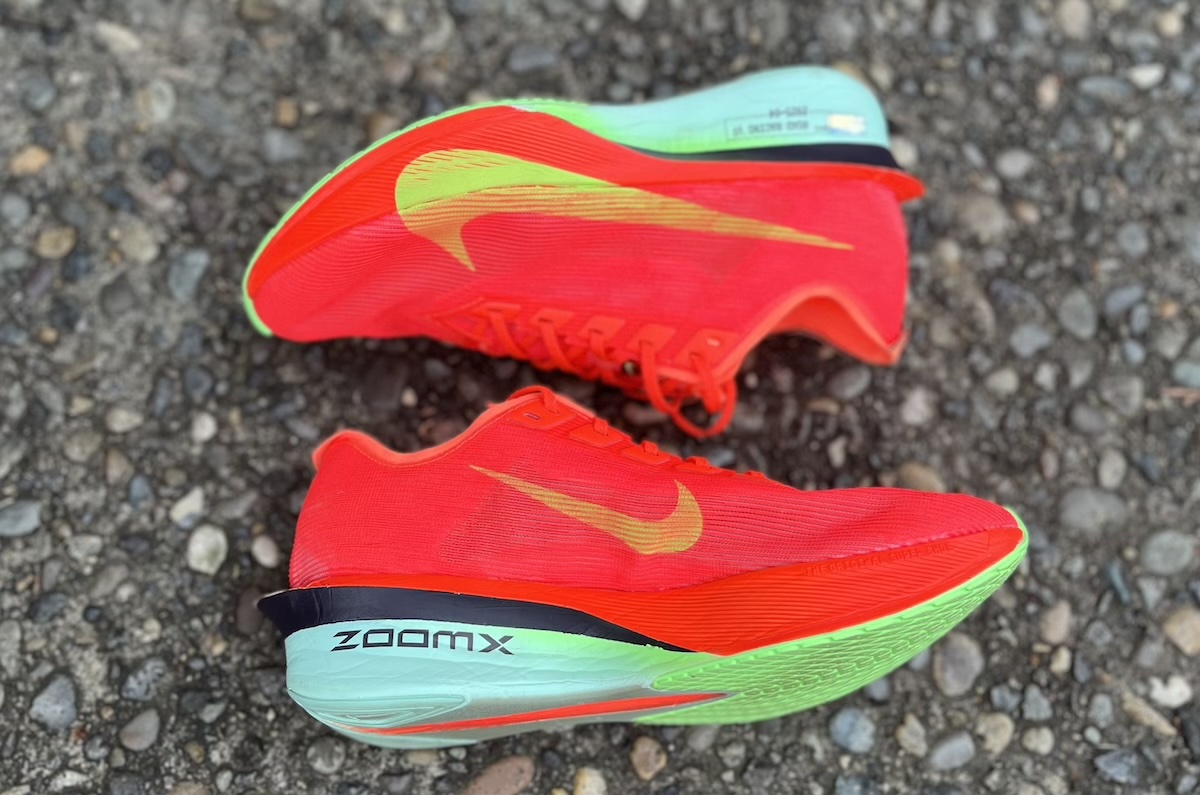
The Flyplate has been improved and has a more aggressive curve, which is designed to maximize leverage from your foot and ankle, aka more pop!
Nike cut down the stack height from 40mm to 36mm, so you’re still getting that bounce and cushion, but the turnover feels quicker and less likely to hit the heel too early.
- Weight: 6.7 oz Men’s, 5.3 oz Women’s (Unisex sizing)
- Stack Height: 35 mm
- Heel Drop: 6 mm
- Available in 3 colors
- Not available in wide
- Available on Nike.com $260
- Read our full review of the Nike Vaporfly 4 here >>
👉Nike Alphafly 3
The shoe was designed to build on the success of the Nike Vaporfly and take things to the next level. Consider this the shoe you’d want for half marathon and marathon running because it’s much more stable, but still has a lot of bounce.
The Nike Alphafly features a number of updates and improvements over the Nike Vaporfly, including a thicker midsole and an additional carbon fiber plate. The shoe also features Nike’s latest foam technology, Nike ZoomX, which is designed to provide even greater cushioning and energy return than the ZoomX foam used in the Nike Vaporfly.
The Nike Alphafly Next% 2 has been making headlines ever since it helped Eliud Kipchoge set the World Marathon Record in Berlin in 2022. Then the Alphafly 3 was worn by Kelvin Kiptom to set the new Marathon Record and our obsessions has only grown!

- Weight: 7.8 oz Men’s, 5.8 oz Women’s
- Heel drop: 8mm
- Stack height: 38 mm
- 2 colors available
- Not available in wide
- Available from Nike.com for $275
- Checkout our complete Nike Alphafly 3 review here>>
👉On Cloudboom Strike
After seeing Helen Obiri win Boston, a lot of runners stood up to take notice of what On was doing with carbon fiber. It’s a very different type of shoe than Nike and for a lot of runners, that’s a good thing.
This shoe is such a massive upgrade from past models, I was truly excited to take it out for a number of runs. It’s so much more cushioned, it feels extremely light and yet more stable than many of the super shoes.
- Increased cushion for distance running
- No pods along the bottom to collect rocks
- Better overall fit and foot room
This is a lower stack height and slightly higher heel drop than many of the other super shoes on the market. Compared to the Nike Vaporfly 2 or 3, it’s a 100% different fit and feeling. Where Nike feels like bouncing, this shoe mostly feels super light. And where you might hate the super high stack on the Nike, this shoe is going to feel more natural.
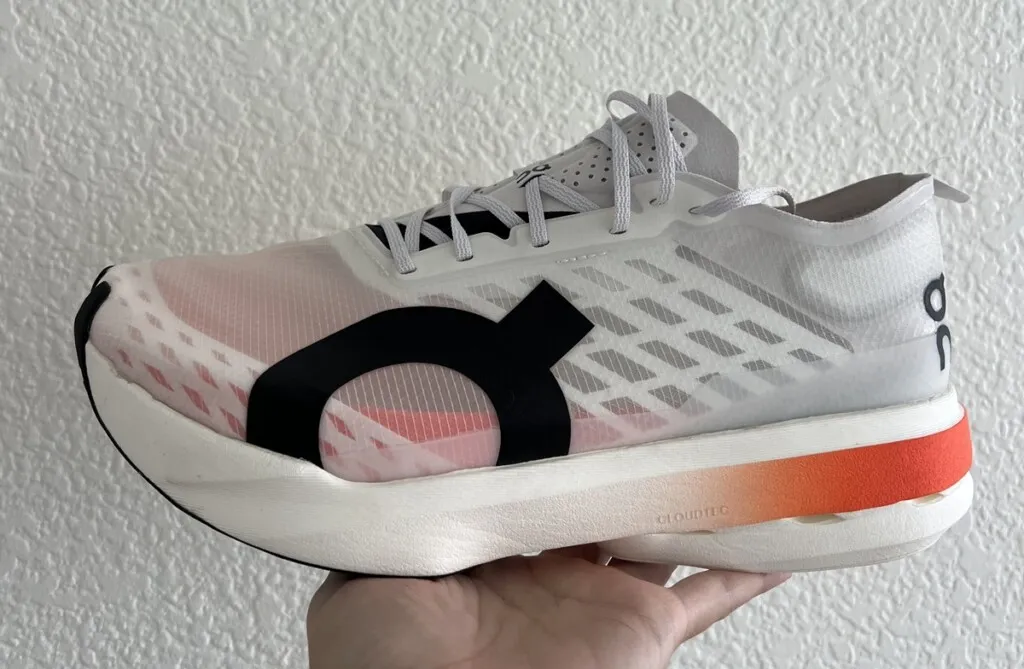
- Weight: 7.7 oz Men’s, 6.8 oz Women’s
- Heel drop: 4 mm
- Stack height: 39.5mm
- 2 colors available
- Not available in wide
- Available at On Running for $280
- Check our full review of the On Cloudboom Strike here >>
👉Adidas Adizero Adios Pro EVO 2
The Pro EVO 2 is great for serious, efficient runners chasing PRs and racing fast marathons. It’s a hefty price tag for a serious shoe that will absolutely benefit the front of the pack.
It’s lighter, more aggressive, and noticeably snappier than both the Evo 1 and Adios Pro 4.
The ride feels comfortable underfoot with great forefoot pop, added bounce from the updated stack, and standout traction, making it the kind of shoe you save for race day when every second matters. Unfortunately, it’s only going to be at it’s prime for 1 long run and marathon race day.
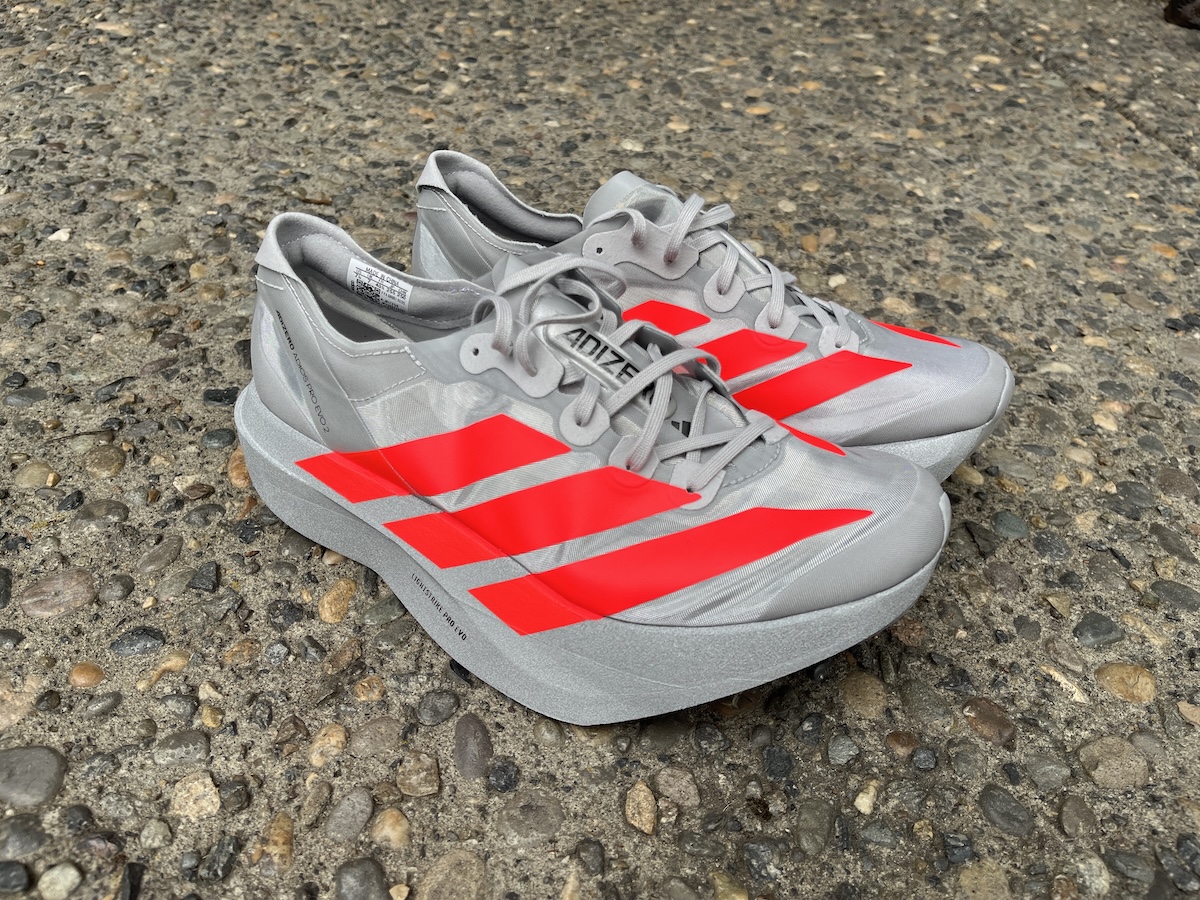
This is a shoe that comes alive when you’re pushing the pace and rewards efficient, fast runners. You likely won’t feel the true benefits of this shoe at paces slower than 7 min/pace.
- Weight: 4.86 oz
- Stack Height: 39 mm
- Heel Drop: 3 mm
- Limited launch colors (more colors coming Fall)
- Not available in wide
- Adizero Adios Pro Evo 2 is $500 and currently VERY HARD TO FIND
Launched in a highly limited release on April 25, 2025 giving ambitious runners a chance to sign up for early access. A broader release is expected before the fall marathon season. Retail price: $500
Buy Adidas Adizero Adios Pro EVO 2
👉FuelCell SuperComp Elite V5
The SuperComp Elite is New Balance’s high-performance carbon-plated racing shoe, designed for long-distance runners seeking a combination of speed, responsiveness, and cushioning.
Lots of changes came to this most recent version of the SuperComp Elite.
It’s overall lighter and has a slightly higher heel drop, going from 4mm to 8mm.
We think that with the updates that were made, it’s going to be a shoe that more runners will enjoy. And for it having a carbon plate, they didn’t hike the pricetag up too much, like we’re seeing with other shoes on this list! 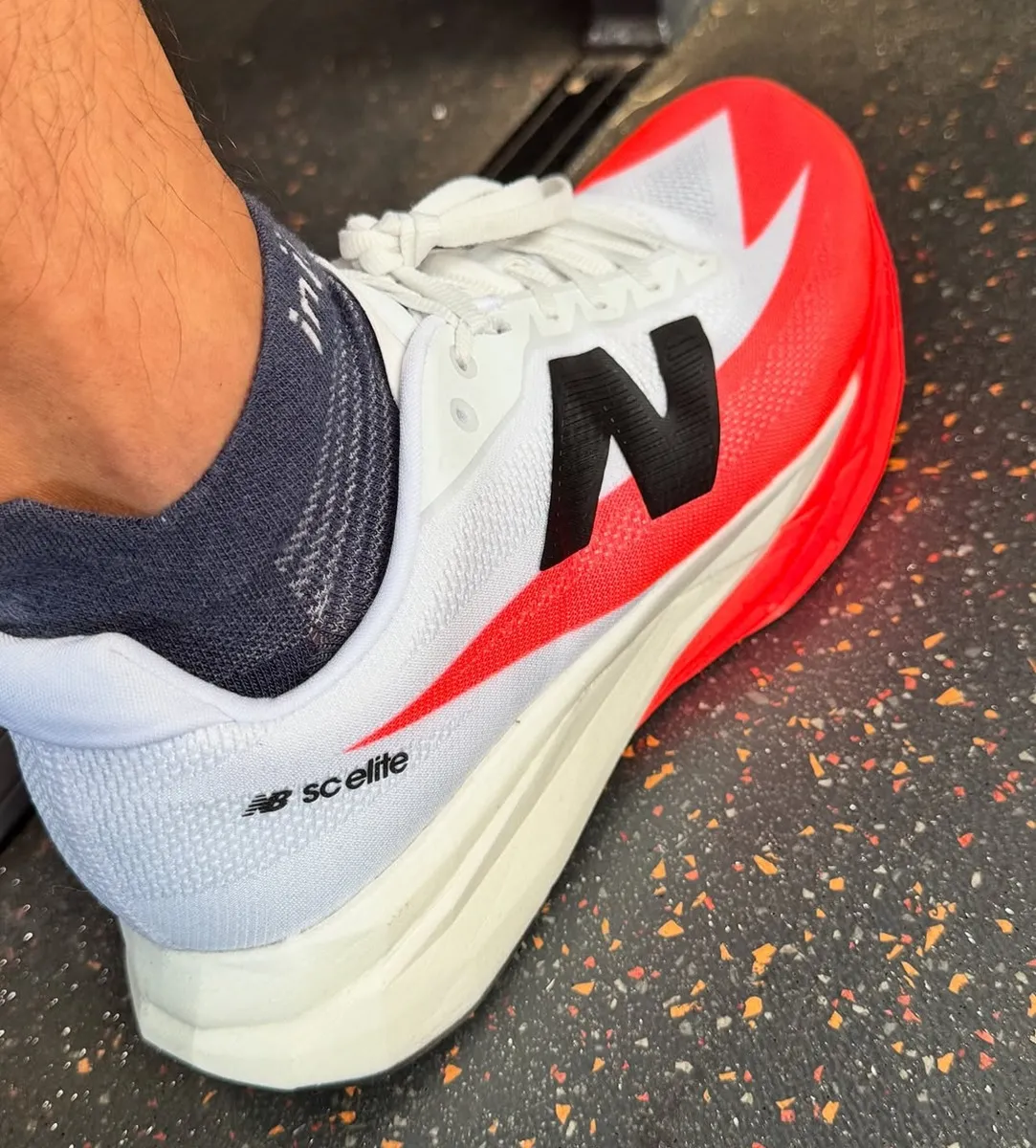
To lay it out in terms of paces, the SuperComp Elite is perfect for anyone who’s looking to run a marathon in 3:40:00 or more. Anyone looking to it faster than that might have a look-see at more aggressive carbon-plated races like the Saucony Endorphin Elite or the Nike Vaporfly 3.
-
- Weight: 7.6 oz Men’s, 6 oz Women’s
- Heel drop: 8 mm
- Stack height: 40mm
- 2 color available
- Available in wide
- Available at newbalance.com for $250
- Our full review coming soon
👉Saucony Endorphin Elite 2
While it moves away from the firm, snappy ride of its predecessor, theSaucony Endorphin Elite 2 delivers bounce you feel in every stride, combining exceptional speed and comfort to make it a standout choice for your next race day.
Designed to help runners unlock their speed, the Saucony Endorphin Elite 2 is a bouncy, high-performance supershoe built for half-marathon to marathon distances. Its standout feature is Saucony’s incrediRUN foam, which delivers insane energy return and next-level cushioning—exactly what you want on race day.
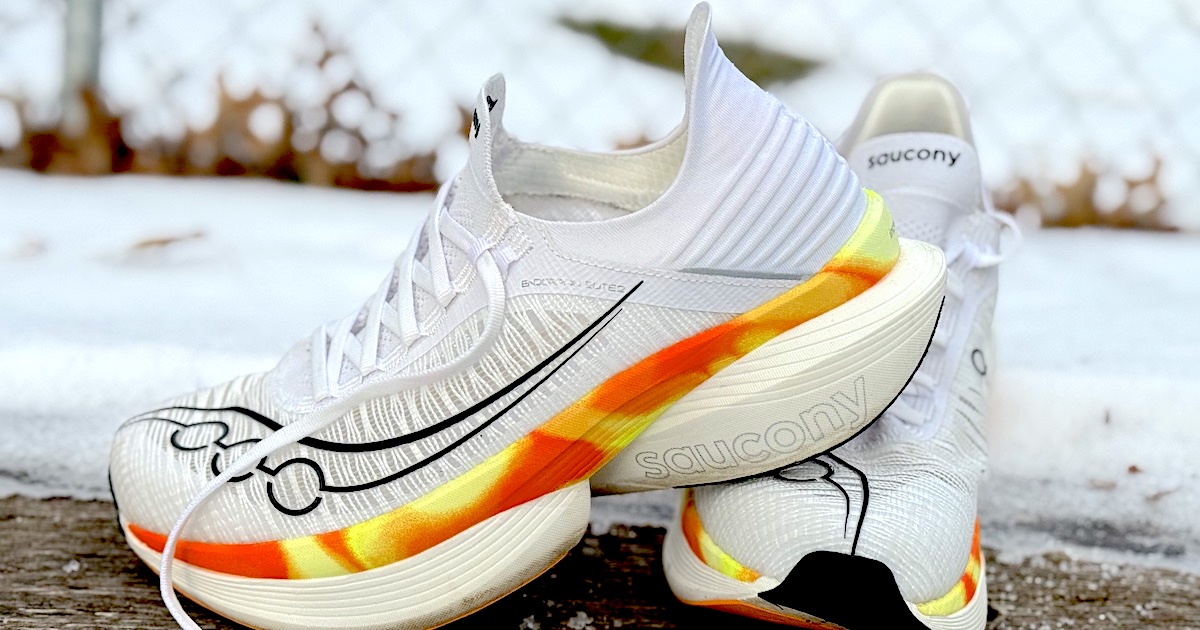
The re-engineered upper, made from ultra-light TPE yarn, works seamlessly with the flat-knit tongue to deliver a snug, sock-like fit that remains comfortably secure through every phase of your run.
It has an accommodating forefoot and midfoot with a slightly-snug toe box. If you’re planning to wear this shoe for a half marathon or marathon, I suggest bumping up a half-size as our feet tend to swell a bit during longer efforts.
The shoe strikes a fine balance between comfort and performance, making it a frontrunner (sorry, not sorry for the pun) for those who crave a softer, more energetic ride.
- Weight: Unisex sizing 7oz
- Heel toe: 8mm
- Stack Height: 39.5mm
- 2 colors available
- Not available in wide
- Available at Saucony.com for $275
- Check out our full review of the Saucony Endorphin Elite 2 here >>
👉Saucony Endorphin Pro 4
The Endorphin Pro 4 is an excellent choice for runners who are looking for a lightweight cushioned carbon plate shoe for training and racing. It will easily carry you from the 5K to the marathon.
The Pro 4 is a shift from previous versions as it now utilizes the PWRRUN HG midsole foam, which was previously reserved for their top tier Endorphin Elite race shoe.
That new cushion feels fantastic immediately and throughout the run, making it feel like you’ve got more bounce and cushion than it’s predecessor. But they also realized that it was a good shoe and didn’t go overboard with changes!! YES A WIN for anyone who enjoyed running in the Endorphin Pro 3.
Here’s a comparison of my Endorphin Pro and Endorphin Pro 4. You can see the stack height has continually increased (roughly 7mm increase since the original). And most importantly the shoe is no longer so narrow. The original is the only shoe in 20+ years of running that gave me a black toenail while running.
- Weight: 7.5 oz Men’s, 6.5 oz Women’s
- Heel drop: 8 mm
- Stack height: 40mm
- 4 colors available
- Not available in wide
- Available now on Saucony.com for $225
- See our complete Saucony Endorphin Pro 4 review >>
👉Bonus shoe for middle of the pack – Nike Zoomfly 6
The Nike Zoom Fly 6 is a great long run to speed work option for runners around the 4 hour marathon mark. It’s going to provide that little bit of a boost to make race pace feel better (assuming you’ve done the training).
Zoomfly is using their ZoomX foam which is a PEBA foam, meaning that it’s lighter and has more energy return. Traditionally PEBAX is not as durable, meaning less mileage before a shoe wears out, but they’re sandwiching the carbon fiber plate between ZoomX and an EVA foam called SR-02.
That combo is going to give the shoes more life than a traditional super shoe, hence a super trainer.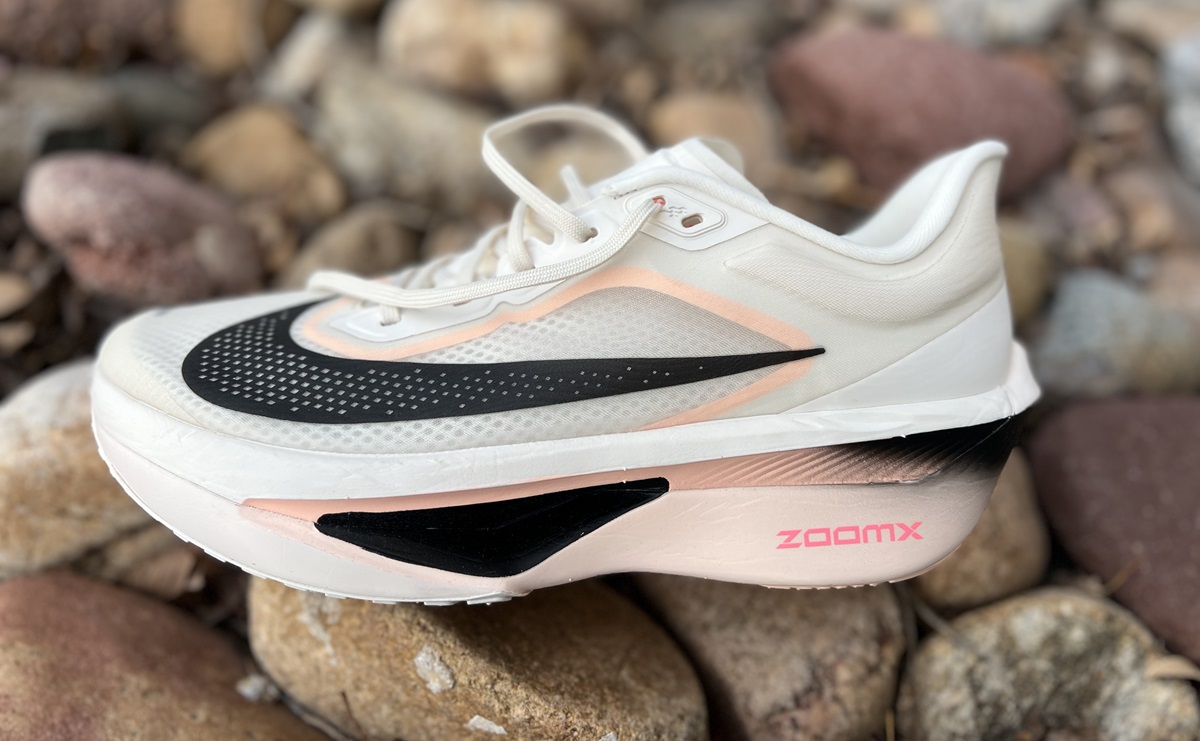 The fit feels pretty standard Nike to me. It’s not narrow, but I wouldn’t recommend it for a wide foot. Also wouldn’t recommend if you’ve come to enjoy a roomy toebox, as that’s not what you’ll find here.
The fit feels pretty standard Nike to me. It’s not narrow, but I wouldn’t recommend it for a wide foot. Also wouldn’t recommend if you’ve come to enjoy a roomy toebox, as that’s not what you’ll find here.
- Heel toe drop: 8mm
- Weight: 7.6 oz women’s, 8.6 oz men’s
- Stack: 40 mm (42mm men’s)
- Usage: Super trainer
- Available in six colors
- Not available in Wide
- Available at Nike.com and RunningWarehouse.com $170
- Check out our full review of the Nike Zoomfly6 here >>
👉ASICS Metaspeed Sky
This is one of the only shoes that I have tried on while still under embargo, but then not had a chance to fully test. So I can’t give you my personal thoughts, but I can share details of these shoes and why many folks are enjoying them.
ASICS is trying to catch up in this area and released a few shoes all at once which many folks can’t quit tell apart. The Metaspeed Edge is going to be the shoe with less cushion, less weight and better for those racing sub 3, etc.
This is a maximum cushioned carbon fiber plate for the marathon runner in you. It’s going to give you both that feeling of comfort over the miles along with the pop that’s often lost in a highly cushioned shoe.

- Weight: 6.5 oz unisex
- Heel Drop: 5 mm
- Stack height: 39.5 mm
- 5 colors available
- Not available in wide
- Available from asics.com for $250
👉Hoka Cielo X1 2.0
The Cielo X1 2.0 is built for speed demons chasing PRs.
With an aggressive forefoot rocker, lively dual-density PEBA foam, and an updated winged carbon fiber plate, this shoe doesn’t just ask you to pick up the pace—it dares you.
But with the speed gains comes a trade-off: stability takes a hit, making this version less forgiving for runners who need more support. If you loved the original for its balance of speed and control, this update might feel like a different beast altogether.
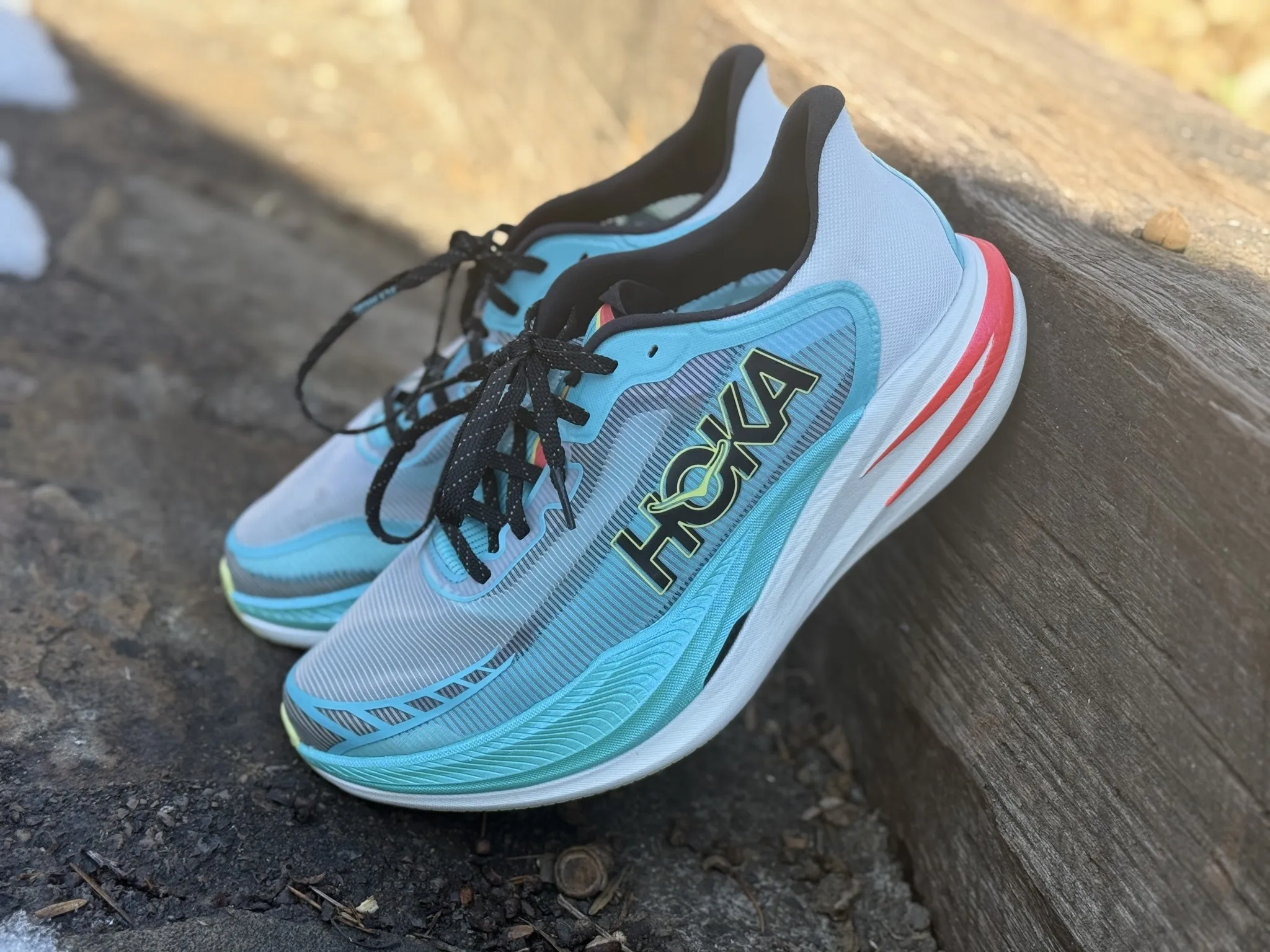
This is definitely a shoe that can take you sub 1:30:00 in the half marathon or under 3:00:00 for a marathon.
- Weight: 8.1 oz Men’s, 6.8 oz Women’s
- Heel drop: 7 mm
- Stack height: 46mm
- 1 color available
- Not available in wide
- Available from hoka.com for $275
- See our complete HOKA Cielo X1 2.0 review here >>
BONUS: If you’re more middle or back of the pack, they are catering to your needs too with the new Hoka Skyward X. It’s super fun ride and I really recommend.
👉Puma Fast-R Nitro Elite 2
Not everyone will dig the design of this shoe, but I was in from the moment it came out of the box. And then you know that Dakotah Lindwurm wore them to win the Olympic Marathon Trials and well…I was ready to test them out again!! I’ve worn them for one half marathon and was impressed.
If you’re a faster runner looking for a light, fast, bouncy race day shoe this may be your new go to because the faster you run, the more this shoe responds. Absolutely enough stability to use for a marathon run, but I’d save it for folks under that 3:30 hour range.

- Weight: 8.5 oz Men’s, 7.4 oz women’s
- Heel drop: 8 mm
- Stack height: 40 mm
- 3 colors available
- Not available in wide
- Available at puma.com for $260
- See our complete Puma Fast-r 2 review here>>
Other brands are jumping on this wagon and I think we will continue to hear more about Brooks Hyperion Elite, Puma Deviate Nitro Elite as a road racing shoe as their technology continues to catch up.
If you’d rather watch me talk about the shoes, I’ve done that here as well!
What is a Carbon Plate Running Shoe?
Imagine strapping on a pair of running shoes that seemingly propel you forward with each stride, effortlessly converting your energy into forward momentum. That’s the promoted and sought after power of carbon plates.
The allure of carbon plate running shoes lies not only in their cutting-edge technology but also in the tangible results they have delivered. Record-breaking marathon times, jaw-dropping sprint performances, and personal bests shattered with every race are becoming synonymous with those who lace up in carbon-plated wonders.
Understanding Carbon Plates
Carbon plates, in the context of running shoes, refer to thin layers of carbon fiber material strategically placed within the midsole. These full-length plates are typically sandwiched between layers of foam to provide cushioning and support while leveraging the unique properties of carbon fiber.
Carbon fiber is known for its exceptional stiffness-to-weight ratio, making it an ideal material for maximizing energy transfer and responsiveness in running shoes.
4 Key Benefits of Carbon Plate Running Shoes
Enhanced Energy Return: Carbon plates act as a spring-like mechanism, storing and releasing energy with each footstrike. This increased energy return propels runners forward, enabling them to maintain higher speeds and cover greater distances with less effort.
Improved Running Economy: By reducing the amount of energy dissipated during ground contact, carbon plates help runners achieve a more efficient running economy. This means they can sustain a given pace while expending less energy, ultimately enhancing endurance and delaying fatigue.
Increased Propulsion: Carbon plates contribute to a more pronounced toe-off, providing an extra boost of propulsion during the push-off phase of the running gait. This additional propulsion allows runners to generate greater power and accelerate with ease.
Lightweight Design: Despite their remarkable performance benefits, carbon plate running shoes are often surprisingly lightweight. The combination of carbon fiber’s inherent lightness and the minimalist design of the shoes allows for agile and swift movement.
But is it the Plate or the Cushion??
In recent years, there’s been a little more debate about if the plate or all the new added midsole foam technology is making the difference. It seems likely that the combination of the two is producing a lot of the results.
In fact, the World Athletics Association placed restrictions around stack height (20mm) and limited shoes to a single carbon fiber plate to be legal for racing.
They have also said that shoes must be available for at least 4 months on the market to also be race legal. This one I have to question because I don’t believe that Helen Obiri’s Boston winning shoes were in fact for sale yet. So this may be a regulation that’s going to start in 2024 along with the stack height.
All right, now that you better understand the what of carbon fiber shoes, let’s start going through some of the top options and how they compare.
Downside of Carbon Plate Running Shoes
While carbon plate running shoes have undeniably revolutionized the running world, it is crucial to acknowledge the challenges and considerations associated with these innovative footwear options.
As with any technological advancement, there are potential drawbacks and important factors to consider before incorporating carbon plate shoes into your running routine.
Cost
Carbon plated running shoes often come with a higher price tag compared to traditional running shoes. The advanced materials and intricate engineering involved in their production contribute to their elevated cost.
Add to that they only last around 200 miles, instead of 500.
Ethical Concerns and Controversies
At the elite level of competition, the use of carbon plated running shoes has raised ethical concerns and controversies.
Some argue that these shoes provide an unfair advantage, potentially distorting the integrity of competition. Governing bodies and event organizers have implemented regulations and guidelines to address these concerns and maintain a level playing field for all athletes.
Injury Risk
Carbon fiber alone is usually not a cause for injury, however the design of shoes seeking to make out cushion in a less stable way has been shown to put more strain on the Achilles tendon.
I’ve seen a number of elites with Achilles injuries that they directly contribute to more miles in these ultra cushioned shoes. But as noted previously, they will continue using them because it’s simply not an option not to.
If you want to know even more about carbon plate running shoes, checkout this Tread Lightly Podcast episode.
All right this was a lot of information about the best carbon plate running shoes. I hope it gave you some info to make a decision. And as always, if it was valuable and you click through one of my links I will make a few pennies, but won’t know anything about you or your order.
Looking for more running shoe info?
- How to Lace Running Shoes to Relieve Pain
- Best Wide Toe Box Running Shoes
- HOKA VS Brooks Running Shoes
- What is Heel Toe Drop
Other ways to connect with Amanda
Instagram Daily Fun: RunToTheFinish
Facebook Community Chatter: RunToTheFinish
Sign Up to Receive a Weekly Newsletter with Top Running Tips and Laughs



 Diadora Gara Carbon 2 Review | Steep Price, Fun Ride
Diadora Gara Carbon 2 Review | Steep Price, Fun Ride